
SUNDAY, MAY 12, 2024
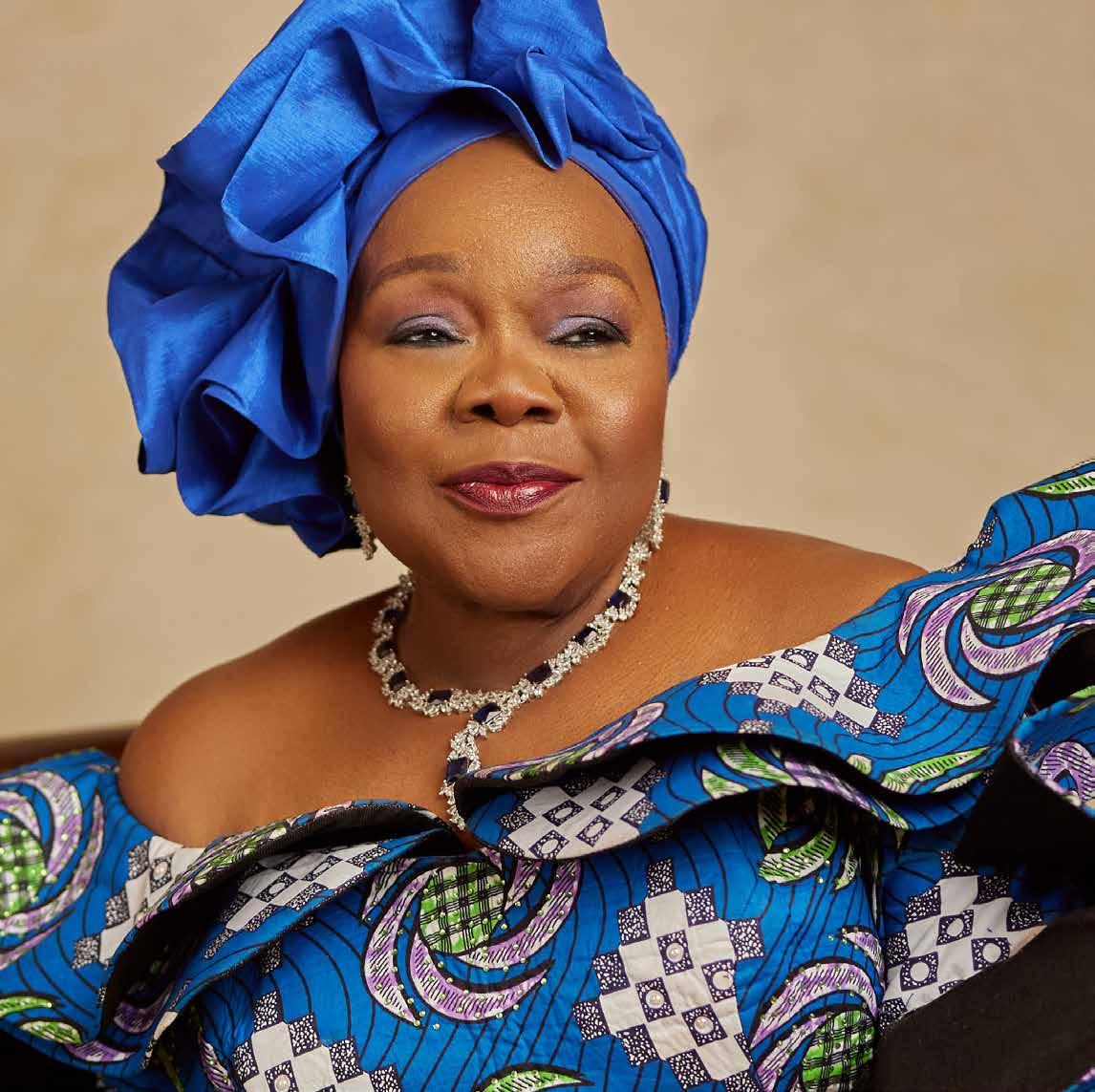

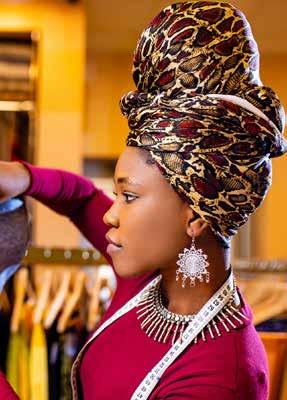
...NOT IN THISDAY STYLE? THEN YOU’RE NOT IN STYLE DAME MARIE FATAYI-WILLIAMS THE WOMAN’S RIGHTS CAMPAIGNER

hen you meet the amiable and eloquent Dame Marie Fatayi-Williams, the 4th President of the Cosmopolitan Women Club, she will tell you she isn’t an activist, but she is very passionate about women’s development and impacting lives. Marie started out in service to women in her late 20’s, having a keen interest in the human condition in general and in ways and means to redress inequalities, alleviate suffering, and stem poverty.





One of those terms
Isn’t it fascinating how Gen Z has a term for every twist and turn when it comes to modern relationships? It’s like they’ve crafted a whole new language to navigate the murky waters of love, and am so here for it.
From breadcrumbing to gaslighting, love bombing and, yes, ghosting, it’s like they’ve got an entire dictionary dedicated to the rollercoaster of emotions we experience.
This week, we have an article on “ghosting,” a common phenomenon that has left loads of single people with no excuse for why they are single. Your significant other simply disappears without any explanation, leaving you wondering if the entire relationship was just one long hallucination. If you ask me, ghosting is just another fancy term to excuse bad behaviour. Yes, really. When it comes to dating, shouldn’t there be clarity? Progress or closure – that’s the way to go. None of this wishy-washy, ambiguous nonsense It’s much kinder to allow someone to move on rather than leaving them in a perpetual state of guessing. Why play any games when you can ask for honesty? While ghosting has sadly become part of the dating vocabulary, it doesn’t take away the sting when you’re on the receiving end. It’s embarrassing, it’s painful, and frankly, it’s just not cool. However, this week’s article isn’t about venting but healing.
If this is you in recent times, hopefully, “What To Do When You Get Ghosted” will help you piece your heart together and guide you on moving past these confusing times.
Moving on to something a bit more glamorous: the Met Gala. We’ve rounded up our favourite looks from fashion’s biggest night, but what really has us excited is next week’s coverage of the AMVCA event -Nollywood’s biggest night - which took place last night. Expect the hits, the misses, and all the jaw-dropping moments. The red carpet has almost become a show of its own, and if you missed the live coverage or didn’t catch it on social media, don’t worry, we’ve got you covered. How’s your weekend shaping up? hope you’re having a relaxing Sunday and maybe flipping through our magazine. Hey, if you’re craving even more content, be sure to check out our website, www.thisdaystyle.ng. Whatever happens, make sure to have a good one. Wishing you all an amazing week ahead, filled with love, laughter, and maybe even a little bit of drama (the good kind, of course). Stay fabulous.
Love,


CONTENT CONTENT 6
S yle COVER NOTE EDITOR’S LETTER EXECUTIVE EDITOR KONYE NWABOGOR 08111847087 DEPUTY EXECUTIVE EDITOR OLUFUNKE BABS-KUFEJI 08111847086 SENIOR DESIGNER MATHIAS ARCHIBONG 07054965500 GUEST CORRESPONDENT YOMI OWOPE CONTRIBUTORS AZUKA OGUJIUBA DIDEE ETA AYO LAWAL BUKOLA AMOBOYE RUKY SALAKO KEJUO LEKAN PHOTOGRAPHER TY BELLO DIRECTOR, PRINT PRODUCTION CHUKS ONWUDINJO 08077092196 @thisdaystyle | @thisdaystyleon www.thisdaystyle.ng
EXECUTIVE EDITOR
Konye
09 20 Society …A NIGHT ON EARTH THE JOURNEY Renowned for its incomparable quality, The Macallan single malt Scotch whisky unveiled its recent expression, A Night On Earth – The Journey, in Nigeria recently, at the Smokes
Barrels, Victoria Island, Lagos. Crafted to encapsulate the essence of homecoming and the journey of reuniting with loved ones, the new release represents the second instalment in The Macallan’s esteemed A Night On Earth series. W
and
Lifestyle & Fashion 7 8 9 10 18 19 20 22 23 OAMA SS 24 - “In Full Bloom’’ Understanding and Treating Traction Aloepecia 2024 Met Gala Bridgerton: Everything You Need To Remember Before Season 3 What to Do When You Get Ghosted Movie Review Nollywood Takes A Trip To India In Postcards So You Want Your Braids To Last Longer Most Expensive Nigerian Art Ever Sold Achieve That Radiant Glow: The Ultimate Skincare Routine for Glass Skin




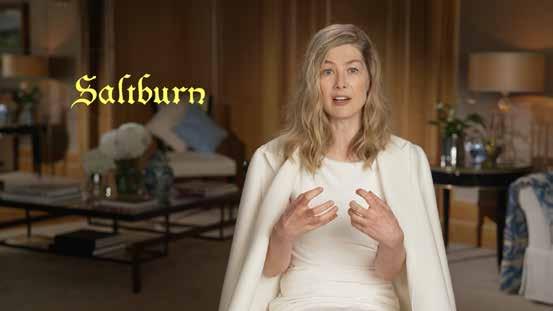










SUBSCRIBE TODAY AND STREAM EXCLUSIVE INTERVIEWS ONLY ON WWW.ARISEPLAY.COM Originals ARISEPLAY ORIGINALS PRESENTS An inside look at global movies creating the most buzz in the run-up to awards season
THE MACALLAN’S …A NIGHT ON EARTH - THE JOURNEY
Renowned for its incomparable quality, The Macallan single malt Scotch whisky unveiled its recent expression, A Night On Earth – The Journey, in Nigeria recently, at the Smokes and Barrels, Victoria Island, Lagos. Crafted to encapsulate the essence of homecoming and the journey of reuniting with loved ones, the new release represents the second instalment in The Macallan’s esteemed A Night On Earth series. The exclusive launch was attended by a selected group of 40 guests across business, finance, and hospitality industries. This is the second release for The Macallan in Nigeria this year, since its oldest expression, the 81-yearold The Reach which was launched in Lagos in February 2024.









RECOGNISING BURNOUT: SIGNS AND STRATEGIES FOR SELF-CARE
WHAT TO DO WHEN YOU GET GHOSTED
You have just been ghosted; what’s next?
HWith all the craziness in the world, it’s all too easy to feel overwhelmed and overworked, leading to a phenomenon known as burnout. Burnout isn’t just feeling tired or stressed; it’s a state of physical, emotional, and mental exhaustion caused by prolonged stress. Recognising the warning signs of burnout and knowing how to handle them is crucial for maintaining our well-being and productivity. You never know; you just might be experiencing this without knowing it, so keep reading to find common burnout warning signs and effective strategies to address them.
Warning Signs
ave you ever sent a message to someone only to be met with silence? No response, no explanation—just a void where communication once flowed freely. I am talking about that dreaded feeling when someone you were excited about suddenly disappears into the abyss of unanswered texts and ignored calls. If yes, then you’ve likely experienced the chilling sensation of being ghosted.
Chronic Fatigue: Feeling tired all the time, even after a full night’s sleep, is a common sign of burnout. This fatigue can be both physical and mental, making it difficult to concentrate or muster enthusiasm for activities you once enjoyed.
Ghosting, a term that has become all too familiar in modern dating and communication, refers to the act of abruptly cutting off all contact with someone without any explanation or warning. It’s like being left in the dark, wondering what went wrong and why the other person suddenly vanished into thin air.
Decreased Performance: Burnout can manifest as a decline in job performance or academic achievement. You may find it challenging to meet deadlines, complete tasks, or maintain the same level of productivity as before.
The experience of being ghosted can evoke a wide range of emotions, from confusion and hurt to anger and self-doubt. It’s a painful reminder of our vulnerability and the uncertainty that comes with forming connections in a digital age where interactions can feel fleeting and disposable.
Cynicism and Detachment: A sense of disillusionment and detachment from work or other responsibilities can indicate burnout. You might feel emotionally drained, apathetic, or cynical about your job, relationships, or life in general.
“It’s like having the rug pulled out from under you,” says Tolu, 28, who recently experienced being ghosted by someone she thought she had a deep connection with. “You’re left questioning everything—what you did wrong, why they suddenly lost interest, and whether it was all just a game to them.”
Physical Symptoms: Burnout can take a toll on your physical health, leading to symptoms such as headaches, stomachaches, muscle tension, and insomnia. These physical ailments are often a result of prolonged stress and can exacerbate feelings of exhaustion and frustration.
The psychological impact of ghosting can be profound, often leaving individuals feeling rejected, abandoned, and unworthy of love and validation. It undermines trust and can make it difficult to open up to others in the future, fearing that they too will disappear without a trace.


personal life is essential for preventing burnout. Set realistic expectations for yourself and learn to say no to additional responsibilities or commitments when necessary.
Prioritise Self-Care: Prioritise self-care by incorporating activities that promote relaxation and wellbeing into your daily routine. These could include exercise, meditation, hobbies, or spending time with loved ones.

Take Regular Breaks: Breaks are crucial for maintaining focus and productivity, so don’t hesitate to step away from your work periodically throughout the day. Even short breaks can help reduce stress and prevent burnout.
about the other person’s inability to communicate effectively than about your worth. Try not to internalise the experience or blame yourself for someone else’s actions. Everyone has their own baggage and reasons for behaving the way they do.
searching for hidden meanings in every text will only drive you crazy. Instead, accept that you may never know the reason behind the ghosting and focus your energy on moving forward.
Focus on Self-Care: Treat yourself with kindness and compassion during this challenging time. Engage in activities that bring you joy and fulfilment, whether spending time with loved ones, practising self-care rituals, or pursuing hobbies and interests that nourish your soul.
Seek Support: Don’t hesitate to reach out to friends, family, or a mental health professional for support if you’re struggling with burnout. Talking about your feelings and experiences can help alleviate stress and
Resist the Urge to Overanalyse: It’s natural to want closure and understand why you were ghosted, but overanalysing every interaction and

Isolation: Withdrawal from social activities and a desire to avoid interactions with others are common signs of burnout. You might feel disconnected from friends, family, and colleagues, preferring to spend time alone rather than engaging in social gatherings or outings.
So, how does one cope with the sting of being ghosted? While there’s no one-size-fits-all solution, here are some strategies to help get through the murky waters of ghosting:
Lack of Satisfaction: Burnout can rob you of joy and satisfaction in both professional and personal pursuits. Tasks that once brought fulfillment may now feel mundane or overwhelming, leading to a sense of emptiness or dissatisfaction.
Strategies for Self-Care
Acknowledge Your Feelings: It’s okay to feel hurt and disappointed when someone ghosts you. Allow yourself to acknowledge and process your emotions rather than bottling them up inside. Journaling, talking to a trusted friend, or seeking support from a therapist can all be helpful ways to express and work through your feelings.
A
provide perspective on your situation.
Practice Mindfulness: Mindfulness techniques, such as deep breathing exercises or guided meditation, can help reduce stress and promote a sense of calm. Incorporate mindfulness practices into your daily routine to cultivate greater resilience to burnout.
Reach Out (But Only Once): If you feel comfortable, it’s okay to reach out to the person who ghosted you to express how their actions made you feel. Keep it simple and straightforward without placing blame or demanding an explanation. Something like, “Hey, I noticed you’ve been distant lately, and I just wanted to check in and make sure everything is okay. If you need space, I understand, but I would appreciate some clarity.”
Set Boundaries: If the person who ghosted you tries reappearing in your life, consider whether you want to entertain their presence. It’s important to prioritise your well-being and establish boundaries protecting your emotional health. Trust your instincts and do what feels right for you.
outdoors, or volunteering. Engaging in positive activities can help counteract the effects of burnout and restore a sense of purpose and meaning to your life.
Don’t Take It Personally: Remember that being ghosted says more
Set Boundaries: Establishing clear boundaries between work and
Engage in Positive Activities: Make time for activities that bring you joy and fulfilment, whether pursuing a hobby, spending time
Then, let it go. If they respond, great. If not, it’s time to move on.
Learn and Grow: Use the experience of being ghosted as an opportunity for growth and self-reflection. What lessons can you take away from this encounter? Are there any patterns or red flags you can identify for future reference? Every setback can be a stepping stone toward personal development and resilience.
Seek Professional Help: If burnout symptoms persist despite selfcare efforts, don’t hesitate to seek professional help from a therapist or counsellor. A mental health professional can provide personalised strategies and support to help you overcome burnout and regain a sense of balance and well-being.



ADEYINKA ADEPETUN DANIEL ATTEH FUNKE KUTI IDORENYIN EMMANSON TSOLAYE EVERETT-ELEORAMO VICTORIA C & BARRELS CHADI ESTEPHAN FOUAD SHHAYEB & HAMMED ADEBIYI
OTI BAZUNU
proven powerhouse. Ikeja city Mall iphone 15(Newphoria)- Print Nigeria 7.75inch x 5.25inch ).indd 1 2024/02/22 12:29 Sunday April 14, 2024 Vol. 22, No. 10559 9
Sunday, May 12, 2024 Vol. 22, No. 10587 Sunday May 12, 2024 Vol. 22, No. 10587 6 7

BRIDGERTON: EVERYTHING YOU NEED TO REMEMBER BEFORE SEASON 3 PREMIERES

Whilst men slept, Shonda Rhimes was cooking!!
In December 2020, renowned writer, showrunner and director Shonda Rhimes jolted us all from COVID slumber with the release of the first season of one of the most captivating period dramas to date, ‘Bridgerton.’
Filled with scandal, drama, alluring characters, riveting romance, and steamy scenes, ‘Bridgerton’ took everyone by surprise. Nearly four years later, we’re all set for the third season and fourth story in the series.
Whether you’re just joining the bandwagon or you’re an old-timer who seems to have forgotten much-needed details, we’re here to bring you up to speed.
From Season 1 and Season 2, here’s everything you need to keep in mind ahead of Season 3’s premiere on May 16;
Pairings
Two of the Bridgerton children are now off with their own spouses: Daphne with Duke Hastings and Anthony with Kate Sharma.
Season three will focus on the third Bridgerton brother, Colin, and his long-time best friend, Penelope Featherington.
We also saw the second Bridgerton sister, Eloise, soften up a little into the warm arms of a young printer, Theo Sharpe, which unfortunately crumbled after a scandalous last-ditch effort by Lady Thistledown(Penelope Festherington) to save Eloise.
Lastly, in the last instalment, ‘Queen Charlotte,’ we also learn that Lady Danbury once had an affair with Lady Bridgerton’s father when she was younger, resulting in an awkward relationship between the two.
Friendships
Our favourite besties ran into tough luck with their friendship. Yep, I’m talking about Eloise and Penelope. While Eloise remained hell-bent on defying society’s standards, Penelope secretly harboured thoughts of romance and love, especially crushing on the third Bridgerton brother, Colin. After some scandals featuring the Queen, Eloise, and Lady Whistledown, Eloise’s suspicion was aroused. After some digging, she discovered her best friend, Penelope, is, in fact, Lady Whistledown, who basically ruined her life in her previous publications.
Friendzoned
Penelope’s heart got shattered when she overheard Colin telling his friends that he could never court her.
The House Featherington Dilemma
Yet another failed attempt by the Featheringtons to boost their societal status and repair their reputation as their cousin who was engaged to one of the Featherington daughters proved to be a scam, seeing fake jewellery and was sent packing.
The King Without His Throne
In Queen Charlotte, we are plunged into the ferocious love story of Queen Charlotte and King George. Turns out the King is still alive but suffers from a mental illness that renders him unfit to be King. The King resides in Kew Palace, leaving Queen Charlotte to rule Buckingham.
And there you have it!
All caught up to speed!
Now, you can join the long line of people eagerly waiting for the premiere of season 3.
Unlike previous seasons, however, the third season is split into two, with Part One premiering on May 16th and Part 2 on June 13th.
NOLLYWOOD TAKES A TRIP TO INDIA IN POSTCARDS







Ladies and Gents, we have another Nollywood-Bollywood crossover!
Hamisha Ahuja has done it again, bridging two continents and two completely different cultures in yet another movie.
After her critically acclaimed Nollywood-Bollywood romcom, Namaste Wahala, in 2021, Ma’am went right back to the kitchen to cook up another meal. But do we love it? Keep reading to find out!
Produced and directed by Hamisha Abuja, ‘Postcards’ is a six-part series that premiered on Netflix on the 3rd of May.
The movie saw the filmmaker reunite with RMD, whom she worked with on her previous film.
It also stars Sola Sobowale, Tobi Bakre, Rahama Sadau, Nancy Isime, Ibrahim Suleiman, and popular Bollywood actors Rajneesh Duggal and the late Rio Kapadia.
Spoiler-free plot summary
‘Postcards’ strings together a bunch of different stories from different characters whose lives are somewhat intertwined. However, we don’t see all the connections until the very end.
In the movie, the life of a Lagos high society woman whose love for owambe and extravagant living is upended when her health suddenly deteriorates, and she has to be flown to India for surgery. She enlists the financial help of her stoic brother, who refuses to see her, while also being emotionally distraught by her son, who refuses to pick up her calls or speak to her. We’re also thrown into the lives of an Indian-Nigerian family who are facing a major discord regarding an initial decision not to have kids.
What we love about it?

Tobi against the project assistant and the dancers.
Their acting and energy blended in surprisingly well.
It was also interesting to see Tobi play the role of the dancer, even though his dancing wasn’t exactly convincing.
Can we throw in the gorgeousness of Aunty Bunmi’s (Sola Sobowale) clothes and jewellery, especially in the film’s first half? Her styling was definitely intentional, and we loved it!
Did anybody say Jollof Rice? Yes!

Our National food had honourable mentions in the movie, and we love it
Thank you, Hamisha!
Last but certainly not least, Rahama Sadau speaks Hindi! Now, that is a realistic highlight. It is only realistic that, being married to an Indian and living in India for about five years, she would know at least some phrases in Hindi. We must say she played that off convincingly well.
What we didn’t quite like...
Much ado about nothing! First of all, the series has no business being a series. The main themes could have been captured in a 1hr 40m feature film.
It’s either the decision to make it a six-part series came in first, or it came in as a result of the many subplots; either way, it didn’t make a great case for this movie. It tried to capture too many things all at once, leaving a number of things either unresolved or rushed. There were plenty of subplots to make for a good series, but there was little to no content and context, making it better suited to be a feature film.
The dialogue was also very cliché and unrealistic, for the most part, which resulted in some really cringeworthy acting that even some of Nollywood’s finest stars couldn’t pull off.
We love a cross-cultural movie any day, anytime, and this movie offers just that. It does a decent job of showing the similarities and disparities in our cultures. The subtle play on the current Japa frenzy in Nigeria and India with the irony that the citizens of some of the choice relocation countries also wish to leave and relocate elsewhere.
The movie also explores the beauty of a cross-cultural union without judgment, changes in societal conventions over time, family and relationship dynamics, and more.
The cinematography wasn’t the best we’ve seen, but it was decent.
Also, Nancy Isime’s role in the movie wasn’t exactly necessary, and even if it was in the least, she didn’t have to be in India for that. The synergy between Nancy and Rahama seemed forced for the most part and didn’t precisely have an impact on the film’s resolution. We would have loved to have explored more of the culture and streets of India, including markets, street food, shopping, sarees, etc. Granted, it was probably due to the limited budget, but a little more would have been nice, especially seeing as about 70% of the movie was shot there. The movie had great prospects but sadly didn’t live up to the hopes we had for it.
Our take!
RMD against Rio Kapadia, Rahama Sadau against
Watching the characters playing off each other despite the cultural differences was also pretty interesting, especially Sola Sobowale against
It’s safe to say ‘Postcards’ is an enjoyable movie, but don’t expect too much in terms of plot.
Rajneesh,
Rajneesh,
M VIE REVIEW
Sunday, May 12, 2024 Vol. 22, No. 10587 Sunday May 12, 2024 Vol. 22, No. 10587 8 9
2024 MET GALA: FASHION FROM “THE GARDEN OF TIME”
...our favourite Red Carpet looks.
Each year, the Met Gala dazzles us with some of the most iconic fashion moments, and this year’s theme, inspired by J.G. Ballard’s dystopian tale “The Garden of Time,” did not disappoint. The red carpet was a runway of imagination, where A-list celebrities showcased their flair in custom ensembles that perfectly captured the essence of the theme. The best looks of the night combined floral and botanical motifs with vintage touches and avant-garde interpretations of decay and ruin, making a bold statement. From the ethereal to the edgy, these looks paid homage to the theme and pushed the boundaries of fashion in the most beautiful ways. Which looks from this year’s Met Gala captured your imagination?
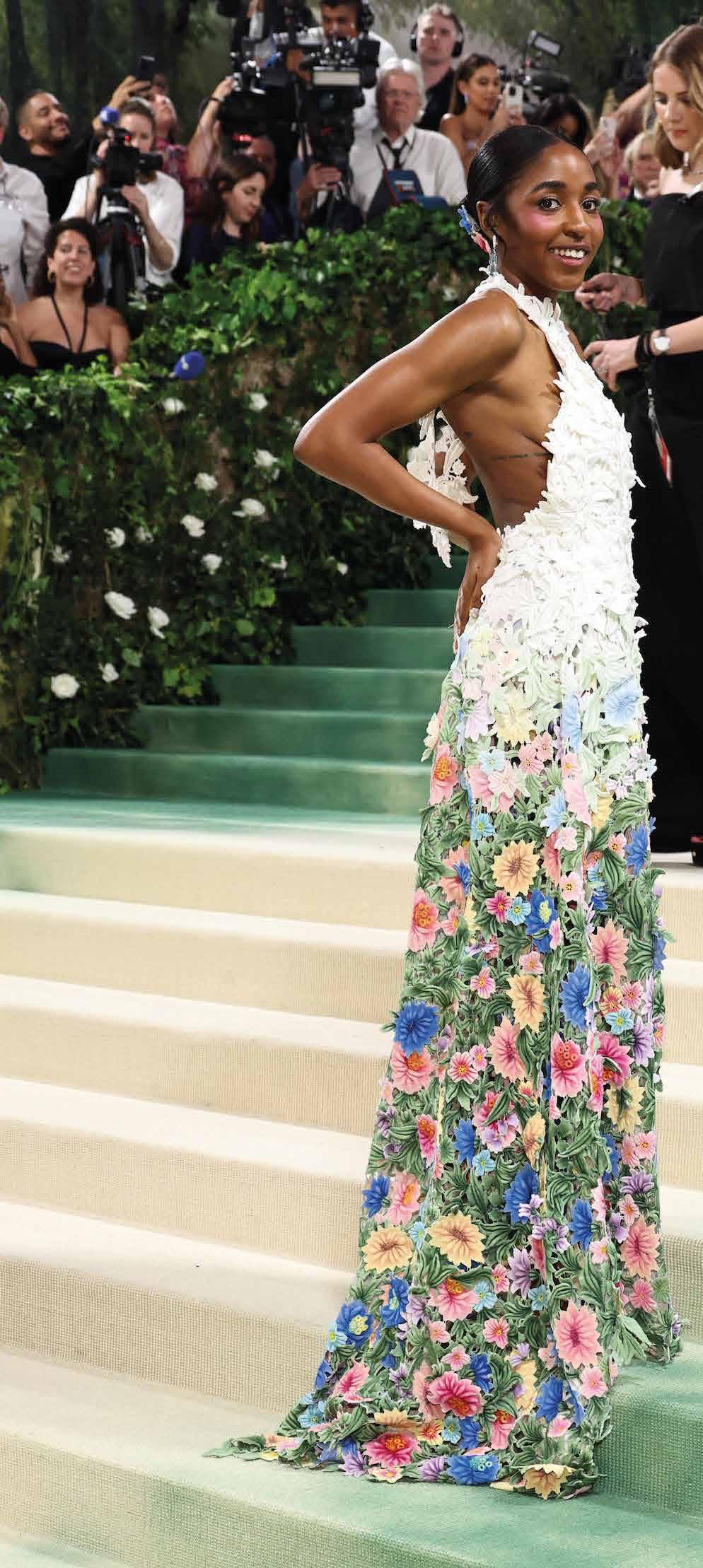

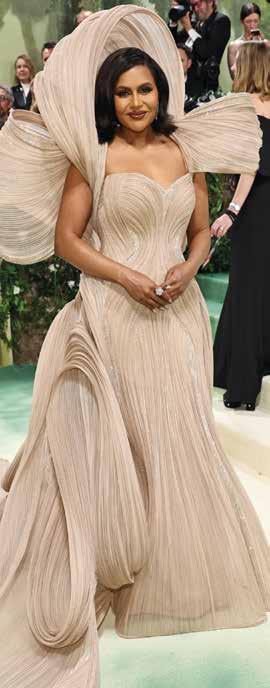
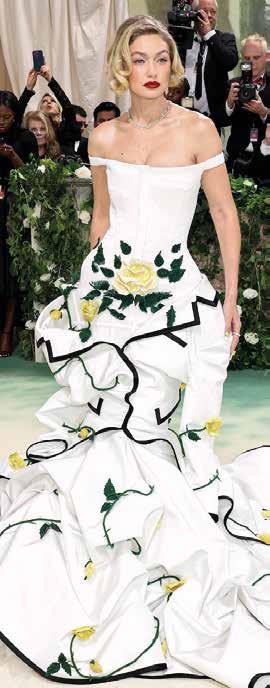







BAD BUNNY IN MAISON MARGIELA MINDY KALING IN GAURAV GUPTA GIGI HADID TYLA IN BALMAIN LEWIS HAMILTON IN BURBERRY VENUS WILLIAMS IN MARC JACOBS KAIA GERBER IN PRADA WISDOM KAYE IN ROBERT WUN KENDALL JENNER IN ARCHIVAL 1999 ALEXANDER MCQUEEN FOR GIVENCHY COUTURE ZENDAYA IN MARGIELA Sunday, May 12, 2024 Vol. 22, No. 10587 Sunday May 12, 2024 Vol. 22, No. 10587 10 11
AYO EDEBIRI IN LOEWE

DAME MARIE FATAYI-WILLIAMS
THE WOMAN’S RIGHTS CAMPAIGNER
When you meet the amiable and eloquent Dame Marie FatayiWilliams, the 4th President of the Cosmopolitan Women Club, she will tell you she isn’t an activist, but she is very passionate about women’s development and impacting lives. Marie started out in service to women in her late 20’s, having a keen interest in the human condition in general and in ways and means to redress inequalities, alleviate suffering, and stem poverty. She worked and is still working passionately, giving herself to voluntary work and community service as well as using her God-given talent for church and state, uplifting the status of poor women and youths in society. She has worked in many capacities with groups, NGOs, and church societies to contribute immensely to the development of women and continues to champion these causes through all the women-led groups she is a part of. In this interview with Funke Babs-Kufeji, she tells us about her journey working for the development of women in our society and at large, how she intends to impact lives as the president of the Cosmopolitan Women Club, and much more.
You were recently installed or invested as the 4th president of the Cosmopolitan Women Club (COSMO). What is the Cosmopolitan Women’s Club about, and what is it meant to achieve?
The Cosmopolitan Women’s Club is a club for older women. You can only join after you’re 50, and you can’t join after 70. So, it’s a club for older women who have already given a lot of service and paid their dues in their time, but at the same time, are willing to continue to give their best, to serve and to pay back, giving back to society. To develop the younger ones, mentor them, upgrade, upgrade, upskill, and be there for women with development issues. And, of course, the sorority being there for each other as well as the elderly ones because we have quite a lot of older ones in the club. We have a nonagenarian, the one and only Shade Thomas Fahm; she will be 91 in September. We also have Iya Oge of Lagos Chief Opral Benson; she will be 90 next year. So, we are there to make them feel remembered, be part of the club, and draw from their spring of experience as younger people, even though we are old but not as old as they are.
What have the women of COSMO been able to achieve as a club or as a sorority over the years?
As a club, our byline is solidarity and friendship for development. And that development is what we stand for. We’re not feminists, but we’ll say we are for women’s development. We have held conferences and workshops
and have been advocacy voices; we were part of the Bring Back Our Girls (BBOG) movement and one of the champions of BBOG. We have held town halls with governors to discuss women’s development in the state. We’ve worked and helped women in prisons because we have a few legal people in our midst, like the former attorney general of Lagos; she’s a member, and the current immediate past one is also a member. We also help young, disabled girls who are brilliant but are not able to afford school fees. We work in close connection with Pacelli School of the Blind and Partially Sighted. Though it’s not much right now, we are helping three students through school. Two are in tertiary, and we have been helping them with school fees for the last few years. And then one who is already in university now has a scholarship.
I want to be remembered for having touched lives, touched many lives positively, and been impactful. Impact in the sense that I have added value to that person and have validated the purpose of his or her creation. Because if I don’t validate that purpose, I’ve not validated my own purpose, and I’ve not impacted any life positively.
So, during your tenure as president, what do you propose to do to ensure your tenure is different and your impact is felt?
That’s why I have an overarching theme. My overarching theme is validating purpose, upskilling and upscaling, and advocacy for development through social impact projects. This is an overarching theme because, in the next few years, can fit in anything I wish to do to impact lives into it. Like food banks, you know what it is like nowadays to be able to afford meals. So, we are going to look at that; we will look at vocational skills, upscaling, and helping. We will look at the promotion of buying and wearing Nigerian because, in our midst, we have Shade Thomas-Fahm, who was the

COVER Sunday May 12, 2024 Vol. 22, No. 10587 Sunday, May 12, 2024 Vol. 22, No. 10587 14 15
first woman to do ready-to-wear Nigerian fashion. Then she’s also started FADAN, as well as Iya Oge. For us, it’s a legacy we hope to continue. If it had been continued from when they started, it would have impacted the economy more than we are trying to do now. Buy, sell, wear, Nigeria, which is where we are going again. We are going to try to see if we can work with Queen Ronke AdemuluyiOgunwusi, founder of the London Fashion Week, to promote adire, taking it back from the hands of the Chinese and bringing it back to source. We want to help the elderly because we think there is a societal gap for them. They have been a bit neglected, but not wilfully, but we believe that we could have a flagship home for the elderly just the way they have abroad because there are no standard homes for the elderly, though there are a few people who are doing it privately, but it’s not the way they would love it to be. They want to do better; they want to upscale. We want to see how we can partner with them, call the government’s attention to these issues, and improve things for older people.
Let me interject at this point: You are doing great things for women. But why aren’t you allowing women of all age groups to get involved and be a part of society?
It’s not me. That’s how I met it.
But why does the club have a certain age bracket? Because this is good work that every woman of all ages should be a part of. Why do you think the club was structured that way?
I wasn’t among the founding members of the club so that I wouldn’t know. But I believe it’s because they knew that there was a lot out there for the younger women that’s been done. And you can fit into many societies without a problem. They were thinking of what those at our level could do and did very well, and they handed down their legacy to the younger ones who were also coming behind us. That’s what I believe, and that’s what I think. But it’s not like we have not thought about it. It was brought up recently when we had a retreat, and some people mentioned we bring down the age limit to 45 so that more people can join. Also, at the last investiture, many invited women kept saying they were not yet 50 and would like to join the club, which means it has been thrown back at us. It now beckons on us to introspect and see whether it can be changed. I’m not saying it will be changed, but it keeps coming up; you have also registered it; others have said it.
As the newly elected president, is it something you want to change or can change?
I’m just one voice; one tree does not make a forest. But you can set the ball rolling, yes?
We have set quite a few balls rolling. We don’t know whether this will catch, so can’t tell you that it will happen because we met when we joined, and it’s a huge constitutional change for the club. It will take more than just me saying it for it to happen. It’s a mind shift; a lot has to be done for it to happen. People have to agree to agree, and if it makes everybody happy, then there’s nothing anybody can do about it.
Though your tenure just began and you have a couple of years ahead of you, tell us, when you leave as president, what do you want to be remembered for?
I want to be remembered for having touched lives, touched many lives positively, and been impactful. Impact in the sense that have added value to that person and validated their creation’s purpose. Because if don’t validate that purpose, I’ve not validated my purpose, and I’ve not impacted any life positively. If you look at what I did at the International Women’s Society, I can’t say can replicate that now, but when I was President of the International Women’s Society for one year only, got the skill centre in Lekki, where we train people now, up and running. It used to be a decrepit NRC or SDP secretariat. We got it from the government; the Marwa government allocated it to us; we brought it up to speed, and now it is not only a skill centre but the International Women’s Society headquarters. In the last 20 years, we have trained over 100 graduates. That is the impact I hope to make as President of COSMO, and I hope will be remembered for it.
You are involved in many women’s groups, from the IWS to the National Council Women’s Society. Let’s discuss the National Council of Women’s Society. What is it about, and how did you get involved?
National Council, that’s the mother of all societies, the umbrella
I don’t like to use the word feminist because it puts you in a box. I’m not saying it’s negative. I would say I’m a woman’s rights campaigner. Yes, I am for women. Yes. I am for their development. But I don’t want to be seen as a feminist or a feminist warrior, not that they are warriors anyway. Feminism has its own undertones and connotations, which I’m not sure I fit into.

of Nigerian women, supposedly. The National Council of Women Society was founded many years ago. I am not sure how long ago, but it was post-independence, a little after independence when it was established. It started here in the West by some prominent women whose names can be found at the National Council of Women Society house at Idowu Taylor in Victoria Island. joined the council in the late 1980s. I joined as a young lady in my late 20s. I joined, and I met people like the late Justice Ifeyinwa Nzeako, who was the president at the time; met the late Mrs. Hilda Adefarasin; and also, the late Mrs. Emily Aig-Imoukhuede; those were the presidents who came as younger people to take charge of the council.
The council is an umbrella for every society of women in Nigeria, so we come together in one voice to speak for Nigerian women, even though we all have different societies. That aside, the council also had individuals, not really individuals as such, but members that are committed to certain causes, standing on committees in the council, where that committee and the societies that form it can co-opt other members to be a part of, who can also add value to that society. I got involved with the council by being co-opted into one of those standing international relations committees because I could speak French. And was co-opted into that committee by the late Mrs. Ajayi-Okunuga, a justice who was working there, who saw my ability to speak French as a value to the international relations committee, and that’s how started with the National Council of Women Society. Apart from the fact that I had been in the International Women’s Society and my late motherin-law, an English woman, Mrs. Irene Fatai-Williams, had been part of International Women Society, she had been part of Lagos women’s dining club those days, and so many of those clubs, she used to drag me to join them. Back then, when you were young and could work hard, older women liked you because you could run around and do this and that. So, at the end of the day, I found myself fully integrated into the council. Then, joined the Lagos Council as well. became very involved and was one of the young-
cluded in the development, were not allowed to break the glass ceiling, and were happening in the corporate world. So, it was a worthy place to be and a worthy thing to do to fight for women’s development.
Would you say you’re a feminist, and what does the word mean to you?
don’t like to use the word feminist because it puts you in a box. I’m not saying it’s negative. I would say I’m a woman’s rights campaigner. Yes, I am for women. Yes. am for their development. But I don’t want to be seen as a feminist or a feminist warrior, not that they are warriors anyway. Feminism has its own undertones and connotations, which I’m not sure fit into. Maybe I’m not adverse to it, but I’m not saying that I am a feminist. I am a woman who is interested in seeing women attain their full potential in life, not being segregated, being included, not being discriminated against, not being violated unduly, and not being left behind, especially in poverty. Poverty is becoming generational for women. A woman does so much and has so much endowment, and she can multitask but is never carried along. When they have worked for something and the booties are being shared, they get forgotten and renegaded.
We have fought hard to get to where we are now, especially in terms of women’s development and equality. Have you seen change? If so, is it effective enough for us to fold our arms? What do you think we should be doing to bring about more change? That’s the elephant in the room. We have tried. We’ve really tried because, from where we are coming from to where we are now, even when I was in the corporate world, I believe that some of us have also paid the price for others to get to where they are now, in boardrooms and stuff.
But still, the gaps are so wide.
We have turned everything into politics. If you look at the constitution of the National Council of Women’s Society, it says non-political, but it has become so political. At the end of the day, whoever pays the piper dictates the tune. remember those days when people like Mrs Adefarasin, who nobody could cower over, were put in Politburo as a voice for women. She knew her onions and could deliver them on our behalf as women. When she left their midst as. one of the few or only female voices, she would come back from the politburo and form committees to plan our next moves as women based on things discussed at the Politburo. Who does that now?
est members to follow them to the centenary in New York to celebrate 100 years of the women’s suffrage movement. So, after that, it just went on and on from there. I became involved in the International Council of Women because our president then at the time, Mrs Nzeako, think, was a member of the board of the International Council, headquartered in Paris, and since spoke French, we went to the meeting in Paris, and this was at the same time they wanted to elect new executives. Each continent was supposed to nominate people for this board, and Nigeria wanted a position. Since I spoke French, was nominated to be a secretary or a recordist, which was a little hesitant about because knew it would take up my time. Still, I accepted the nomination, won, and went on to be on the International Council of Women board for two terms. And so, I cut my teeth very quickly in there. And then, coming back, I just continued going from one standing committee to another, working with the International Relations Standing Committee, the Decade for Peace, the United Nations Decade for Peace, and more.
Being a part of all these groups and societies, what have you been able to achieve? Why would you advise other women to join these women-led groups?
If had joined those groups to gain something for myself, would not have told you to join them. I didn’t gain anything for myself.
But what are the values and benefits of joining these groups, and why should other women join?
The value is that you give service. Service of self for the betterment of others. You make an impact and touch lives. I believe have talents. I didn’t give myself these talents; they were given to me by God. And if I didn’t use it to explain why I was created, then what’s the point? have many talents, I can organise very well, I can make an impact, and I can transform positively. Just doing my work in an office wasn’t enough to impact lives, so I had to go out there to do it. The reason I joined these groups, apart from making an impact, is because I wanted to be able to stand up for my rights. It was recognised internationally that women were being side-lined, were not attaining their full potential, were not in-
A lot of women now are not part of that movement that saw how women came from nothing to something. So they don’t get it. A woman is made Minister now and knows nothing about gender sensitivity, women’s affairs, or the province of women. She doesn’t know where we are coming from or even where we are going. You can’t give what you don’t have. You’ve got to have something to give it. If you don’t know the space, you shouldn’t be there. There are many square pegs in round holes, both in the corporate and public sectors. We once had a female Minister of Petroleum, which we never thought would happen. That would have been a perfect time for women to say yes. We have arrived because when men were petroleum ministers, I knew what they did for their various communities and themselves as a group of men. But when it was our turn, where were the women? Did anyone call everyone together or say we have a minister as a woman? Let us come together and get something or do something we can use to make our voices heard. It was the perfect time for us to create our own funding tunnel where we could be grounded and have the money to get involved on equal terms with men, but nothing happened, so we are back at the struggle.
What is your message to women in positions who don’t know or understand how important it is for women to support women?
Look around closely and see who’s suffering, who needs help, and who is at the bottom of the pyramid. How do you bring them to the top of the pyramid because you need to take them there? Sit down to do that arithmetic or that self-analysis. You will find that women, according to the United Nations, are among the poorest of the poor, and they and their children are entering poverty because we now have what they call generational poverty, and that is very dangerous for any society. It means that it has become so endemic that eradicating it is a tall order, and it is only women who control this aspect of life. So, if we don’t empower women, society crumbles. When you, as a woman, find yourself in a place of empowerment, be happy that you are empowered, and remember to look down from where you are. Yes, you must develop other women and form a network of women who keep lifting each other up. This is called sustainable development.
What is your message to the men?
Support the women. Be a part of us; we can’t do it without you.
Sunday May 12, 2024 Vol. 22, No. 10587 COVER Sunday, May 12, 2024 Vol. 22, No. 10587 16 17
OAMA SS 24 - “IN FULL BLOOM’’

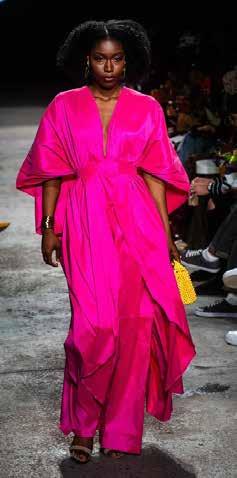

OAMA is setting the fashion world abuzz with its latest Spring Summer 2024 collection, “In Full Bloom,” unveiled at the Fashion Art Toronto Fashion Show. As the sole African brand featured in this prestigious event—the longeststanding fashion showcase in Toronto—OAMA’s inclusion marks a significant milestone.
This season, “In Full Bloom”, is more than a collection; it’s a celebration of the OAMA woman, embodying her journey through life’s positive transformations and her readiness to embrace new adventures. The collection bursts onto the scene with a custom signature print, blending bold colours and innovative styles. It’s also a tribute to the confident, adventurous woman who’s not just dressed for the occasion but is making a bold statement with every step she takes in exploring the world this summer.
OAMA is a womenswear brand by Nigerian fashion designer Doyin Amao. The brand’s inspiration comes from the designer’s love for bold prints and striking colours.
The brand embodies a celebration of femininity, curated for women who love to make a fashion statement wherever they go. The OAMA woman is bold, fun, and unafraid of making a statement.





SO, YOU WANT YOUR BRAIDS TO LAST LONGER
Braids are more than just a hairstyle; they are a form of expression, an embodiment of culture, and a practical solution for managing hair. Whether you sport box braids, cornrows, or any other type of braid, the goal is usually to keep them looking fresh and neat for as long as possible. Achieving this isn’t just about beauty; it’s about protecting your hair and ensuring its health. Here are some expert tips to help you maintain your braids so they can look great and last longer.
By Bukola Amoboye
Start with Healthy Hair
The foundation of any great hairstyle is healthy hair. Before getting your braids done, ensure your hair is in the best possible condition. This means trimming split ends and treating your scalp and hair with a nourishing deep conditioning treatment. Healthy hair can withstand the pulling involved in braiding and will support the weight of any added extensions.
Choose the Right Braider
The skill of the person braiding your hair is crucial. A braider who pulls too tightly might cause discomfort and even lead to hair damage or loss. Find a professional who understands the importance of not just the aesthetics of braids but also the health of your hair and scalp. A good braider will secure your hair firmly but not so tightly that it causes pain.
Maintain Scalp Hygiene
Keeping your scalp clean is essential when wearing braids. A buildup of sweat, oil, and product can lead to itching and flaking. Wash your scalp with a gentle, diluted shampoo or a cleansing conditioner every two weeks or so.
You can also apply the product directly to your scalp using a bottle with a nozzle tip, massaging gently with your fingertips before rinsing thoroughly.
Keep Your Scalp Moisturised
A dry scalp can become itchy and flaky, potentially damaging your braids and making them look old prematurely. To prevent this, regularly apply a light oil or spray leave-in conditioner to your scalp. Natural oils like coconut, jojoba, or almond oil are great choices, as they don’t weigh down your braids but keep your scalp nourished.
Protect Your Braids at Night
Sleeping without protecting your braids can lead to frizz and breakage. To preserve your style, wrap your hair in a satin or silk scarf or bonnet before bed. These materials reduce friction between your hair and the pillowcase, keeping your braids neat and minimising frizz.
Avoid Over-Styling
While it’s tempting to switch up your look with different braid styles, frequent manipulation can stress your hair. Try to keep styling to a minimum to avoid putting extra tension on your roots. When you style your braids, opt for loose, easy styles that don’t pull on your scalp.
Refresh Your Edges
Your edges are the first to show signs of wear in braided styles. To keep your look fresh, consider redoing the edges every few weeks. This will make your hairstyle look neater and reduce tension on the most fragile part of your hairline.
Listen to Your Hair
Pay attention to what your hair is telling you. If you experience excessive itching, bumps, or hair loss, it’s time to let your hair rest. Braids are a protective style, but they should never cause harm. Letting your hair breathe between styles is crucial for its overall health.
Plan for Regular Maintenance
Just like any other hairstyle, braids require regular upkeep. Set up a maintenance routine that includes cleansing, moisturising, and occasional touchups. This routine will help extend the life of your braids and keep them looking as good as new.
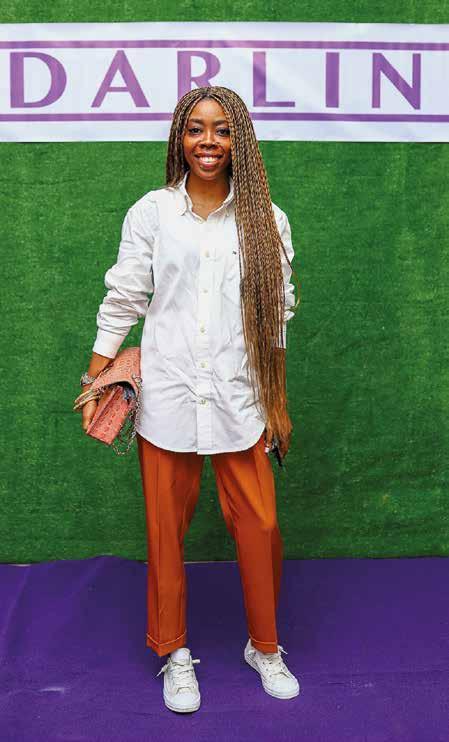


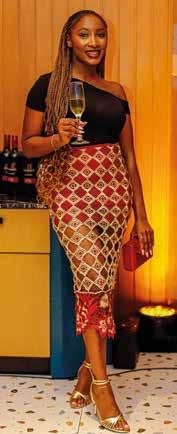

ODUGBESAN-THOMAS BOLA TINUBU AND KEMI DA SILVA IBRU MERCY FAMILUSI VANESSA AZAR Sunday, May 12, 2024 Vol. 22, No. 10587 Sunday May 12, 2024 Vol. 22, No. 10587 18 19
DERIN
MOST EXPENSIVE NIGERIAN ART EVER SOLD
By Funke Babs-Kufeji
Before today, in Nigeria, being an artist wasn’t a very lucrative job. Many artists lived in extreme poverty, and some of them even died in it. But thankfully, those days are far behind us now that there is a true boom and a demand for not only African arts but also Nigerian art. Perhaps this is a result of increased global awareness of the unique traits, appeal, and unusual features of Nigerian arts. Despite how ridiculous it might sound, the sales of Nigerian art have quadrupled over the years. You can now purchase Nigerian artwork for millions of dollars, which wasn’t attainable before. Over the years, African artists have shattered glass ceilings, invested in their craft, and are creating truly unique works with incredible techniques using different media and, as a result, master pieces.
As the price of genuine African artwork rises due to increased demand, prospective African artists should be inspired to work even harder to compete on the international scene. This week, we bring you some of the most expensive African artworks ever sold.
NJIDEKA AKUNYILI CROSBY
YINKA SHONIBARE
Shonibare is a Nigerian and multimedia discipline artist who studied painting and sculpture at Goldsmiths College in London, where he also earned a master’s degree in fine art.
In 2020, a developer in West Palm Beach, USA, paid $925,000 to have a 20-foot-tall sculpture installed at a new building he built. The sculpture, dubbed “Material (SG),” was presented in 2021 and shows motion frozen. Museums like the Smithsonian Institute in Washington, D.C., and the Moderna Museet in Stockholm also have collections of his artwork. His pieces are available to see or buy on Artspace and at his gallery in Lagos.
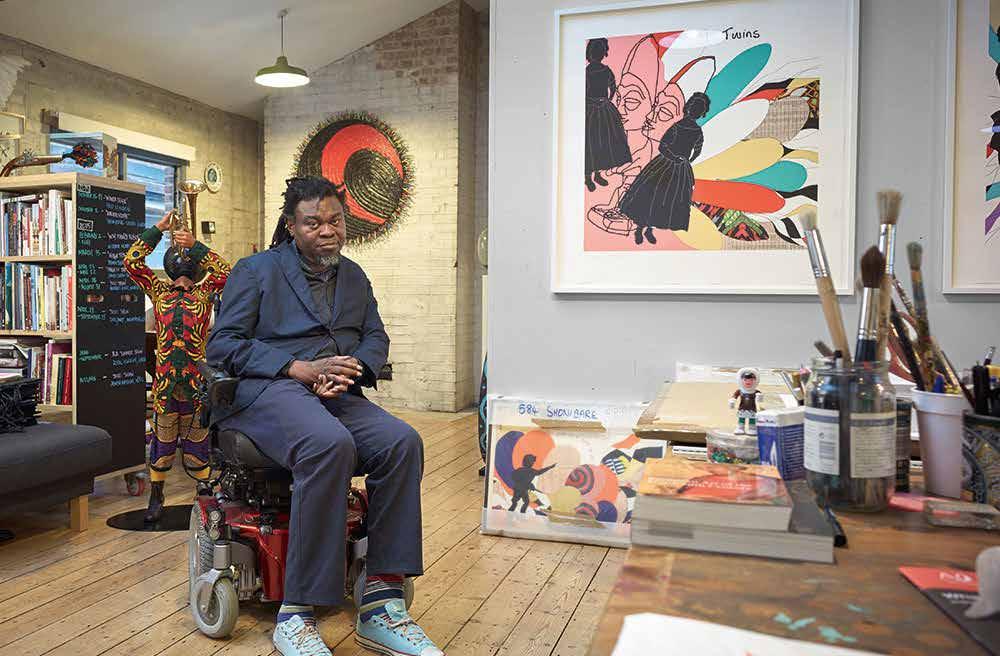



Los Angeles-based Nigerian visual artist Njideka Akunyili Crosby sold her artwork, titled “Bush Babies,” for $3.4 million in 2018. The artwork, which is a botanical painting, she says is a reflection of her origin and heritage and draws inspiration from her experiences as a young Nigerian woman from Enugu living in `America. More information about Crosby and her artwork can be found and purchased at Ocula. BEN ENWONWU “TUTU”
Ben Enwonwu, born in 1917 and died in 1994, was a Nigerian-renowned artist. He was the first African artist to be commissioned to paint Queen Elizabeth II’s portrait. His oil on canvas masterpiece “Tutu,” also known as the African Monalisa, sold at Bonham’s London for $1.6 million and is one of the very first African art works to be sold for over a million dollars.


TOYIN OJIH ODUTOLA

Ile-ife born, Alabama raised Toyin Odutola is known for her use of multimedia composition on different surfaces, which has made her famous in the art industry globally. At Sotheby’s, her drawing “Compound Leaf” brought $589,785 in sales, making it one of the highest-selling African arts globally. Her works have been featured in the famous Seattle Museum of Art and the Boston-based “Institute of Contemporary Art” exhibitions. Her work can be found at the Whitney Museum of American Art in New York and the National Portrait Gallery in London. Her artwork is also on display at the Jack Shaiman Gallery.
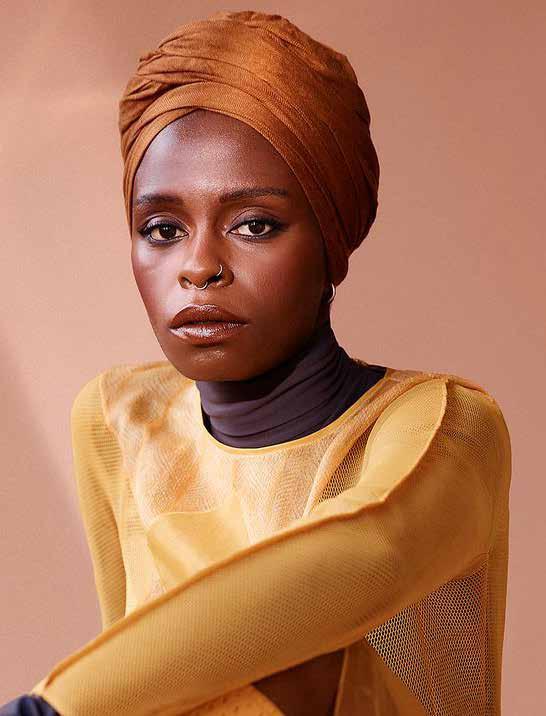
Sunday, May 12, 2024 Vol. 22, No. 10587 Sunday May 12, 2024 Vol. 22, No. 10587 20 21
UNDERSTANDING AND TREATING TRACTION ALOPECIA
Traction alopecia, a form of hair loss triggered by consistent pulling on the hair, is an increasingly common but often preventable condition. As society places a premium on certain hairstyles, many of us unknowingly risk our hair health in pursuit of beauty. This article will help you understand what traction alopecia is and provide you with practical tips on how to reverse it and prevent further damage.
What is Traction Alopecia
At its core, traction alopecia involves gradual hair loss, primarily caused by a constant strain on the hair follicles. This strain can stem from hairstyles like tight ponytails, braids, dreadlocks, and extensions. Initially, the hairline begins to recede, particularly around the temples and forehead. If the stress continues, the hair loss may become permanent, leaving patches of thin or balding areas.
The Early Signs
The first signs of traction alopecia can be subtle and often overlooked until substantial damage occurs. They might start as small bumps on the scalp resembling pimples, followed by thinning hair around the hairline. Another indicator is frequent headaches from tightly styled hair. If you notice these signs, addressing them promptly by loosening your hairstyle and giving your hair a much-needed break is crucial.
Reversing the Damage
Fortunately, if caught early, traction alopecia is reversible. Here are some steps you can take to nurture your hair back to health:
Loosen Up - The simplest yet most effective remedy is to wear looser hairstyles. Avoid styles that pull on your roots or use tight accessories. Instead, opt for loose braids or ponytails and use fabric hair ties instead of rubber bands.
Scalp Care - Invest in your scalp health. Massaging your scalp can increase blood circulation and promote hair growth. Use nourishing oils like coconut or castor oil, which moisturise the scalp and strengthen hair roots. Condition and Strengthen - Apply deep conditioning treatments regularly to restore moisture and resilience to your hair. Protein
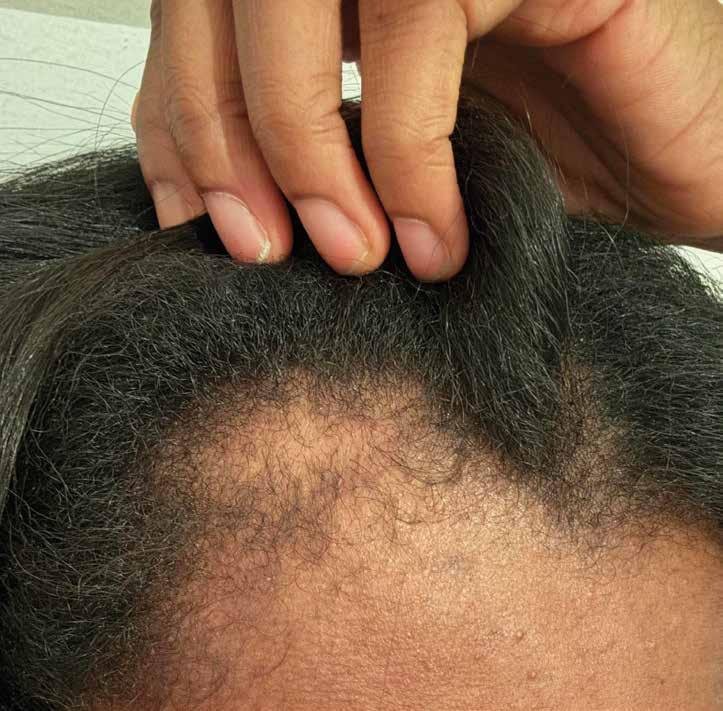
treatments can also reinforce the hair shaft, preventing further breakage.
Consult a Professional - If you’re unsure how to manage your hair care routine or if the hair loss persists, seek advice from a dermatologist or a trichologist. They can offer treatments such as minoxidil (Rogaine) to stimulate hair growth or suggest other hair growth treatments that are best suited for your condition.
Preventing Traction Alopecia
Prevention is always better than cure, especially with something as delicate as hair. Here’s how you can keep your locks lush and healthy:
Variety is Key - Regularly change your hairstyle to avoid putting constant pressure on the same areas of your scalp.
Be Gentle - When detangling, especially if your hair is curly or kinky, use a wide-tooth comb or detangling brush. Always start from the ends of your hair and work your way up to prevent unnecessary pulling and breakage.
Watch the Weight - Heavy extensions can exacerbate hair pull. Opt for lighter options and ensure they’re not attached too tightly.
Educate Yourself - Understand the needs of your hair type. Curly or textured hair might require different care techniques and products than straight hair.
Embracing Natural BeautySometimes, embracing your natural hair texture and minimising harsh styling practices can be best for your hair health.




ACHIEVE THAT RADIANT GLOW: THE ULTIMATE SKINCARE ROUTINE FOR GLASS SKIN
First, it was their movies, then their music, then their fashion, and now, it’s skincare!Yes, Koreans seem to have had the world in a chokehold this decade.
In the area of skincare, one trend that has captured the hearts of beauty enthusiasts worldwide is that of glass skin, popularised by Koreans.
Glass skin presents you with a translucent, luminous, and poreless appearance that is almost unreal.
Everyone is on this trend, and beauty enthusiasts have cloned the perfect routine to achieve it, with major influence from the Korean skincare industry.







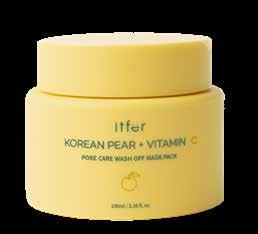
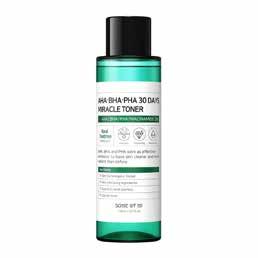
A routine we’ve now broken down just for you;
1. Double Cleanse: Start your skincare routine with a double cleanse to ensure your skin is thoroughly clean and free from impurities. For your first cleanse, begin with an oil-based cleanser or micellar water, and then proceed with a gentle foaming or cream cleanser to remove any remaining residue and leave your skin feeling refreshed.
2. Exfoliation: Incorporate exfoliation into your routine to rid your skin of dead skin cells and reveal smoother, more radiant skin underneath. Opt for a chemical exfoliant containing alpha hydroxy acids (AHAs) or beta hydroxy acids (BHAs) to gently resurface the skin without causing irritation. Use 2-3 times per week for best results.
3. Hydration is Key: Hydration is the base of glass skin. Your skin has to be well hydrated for you to really get that luminous radiance that is glass skin. Employ more water-based products that contain glycerin or hyaluronic acid. Also, incorporate hydrating and brightening sheet masks into your routine to hydrate and moisturise your skin from within.
5. Seal in Moisture: Lock in all that hydration with a nourishing moisturiser suited to your skin type. Opt for lightweight, gel-based formulas for oily or combination skin and richer creams for dry or mature skin.
6. Sun Protection: Never skip sunscreen, even on cloudy days. Sunscreen protects your skin from harmful UV rays and helps prevent premature ageing and hyperpigmentation, two common concerns for those seeking glass skin perfection.
7. Hydrating Makeup: To maintain the glass skin look even with makeup, work with lightweight and water-based products. Choose hydrating mists, foundations, tinted moisturisers, or BB creams that provide coverage while allowing your skin to shine through. Highlighter can also be used strategically to accentuate the high points of your face for an extra dewy finish.
4. Targeted Treatments: Glass Skin is typically associated with even-toned and smooth skin, so if you have rough or bumpy skin and dark spots, you may want to address them specifically with targeted skincare treatments. Product-wise, look for ingredients like vitamin C, niacinamide, and retinol for maximum efficacy.
MANYP
SEOUL-CEUTICALS-KOREAN-SKIN-CARE SHEET MASK
CLEANSING OIL
VITAMIN WASH OFF MASK
TONER
SNAIL MUCIN MOISTURISER
TOKINI PETERSIDE SCHWEBIG
WATER SKIN PEEL DEEP CLEANSING OIL
MICELLAR
Sunday, May 12, 2024 Vol. 22, No. 10587 Sunday May 12, 2024 Vol. 22, No. 10587 22 23






































































































